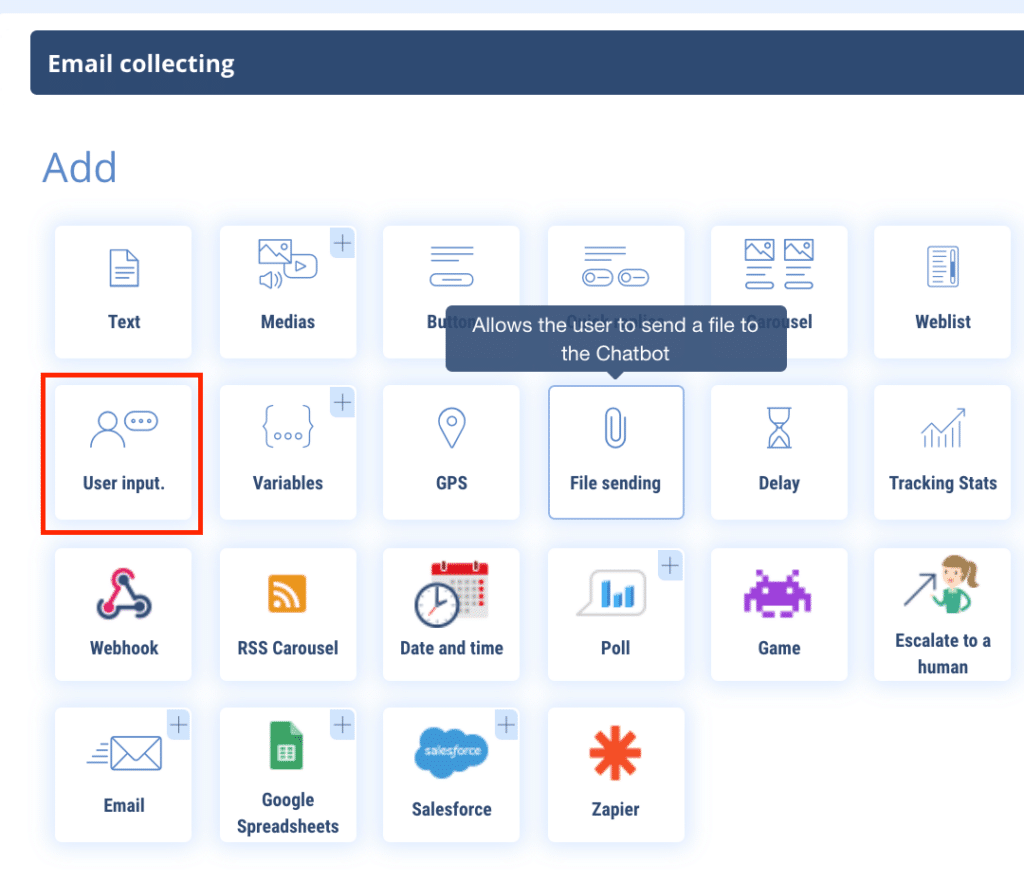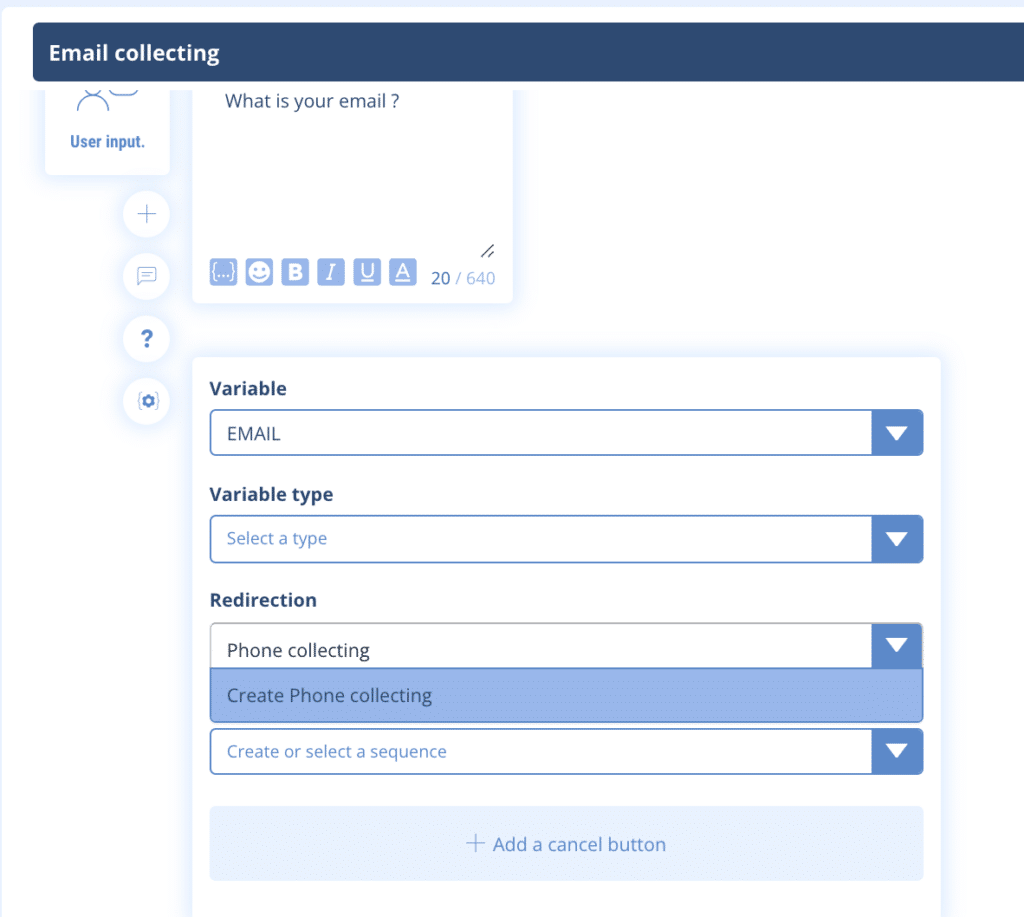Retrieve an email, phone number or name via your site’s chatbot
In a webinar, we talked about collecting leads via a Facebook Messenger chatbot. This is also possible for a web chatbot, and is a powerful feature of Botnation. What’s more, a chatbot brings in 30% more leads than a traditional form, so why deprive yourself?
For simplicity’s sake, we’ll distinguish between 2 cases: retrieving an email and retrieving a phone number or number.
1. Collect an email
On Facebook Messenger, variables sent by Facebook already exist, making the task easier. On a web chatbot, it’s different. The user’s browser doesn’t send us this data, so we have to request it.
All you have to do is make a request like “What is your email address?” and save the answer in a variable you create, for example {{EMAIL}}. The “User entry” module will be your ally in this.
Create a sequence for email collection and choose “User input” from the list of functions:

The first drop-down menu will ask you to choose the variable with which you wish to record your user’s response. So create this variable, or choose it if you’ve already created it.

Botnation offers 3 types of variable:
- Free text: the chatbot will store any type of text in the {{EMAIL}} variable, including the complete expressions “cyprien@botnation.ai”, “My e-mail address is cyprien@botnation.ai” or “cyprien botnation”.
- Number detection: the chatbot will only retain numbers, which is very useful for a phone number, for example.
For example, if the user writes: “0644662254”, then the chatbot records “0644662254”,
If the user writes: “my number is 0644662254” then the chatbot records “0644662254”.
Likewise, if you write “I want 3 tickets for the concert”, the chatbot only retrieves the “3”. It even works with “I want three tickets for the concert” where the chatbot keeps “3”. - Email detection: the same principle applies. If the user writes “My e-mail address is cyprien@botnation.ai” then the chatbot only keeps “cyprien@botnation.ai”. If the latter writes “cyprien@botnation.ai”, it will logically retain “cyprien@botnation.ai”. Finally, if the user writes any expression or phrase without an “@”, then the chatbot repeats the question.
In our example, email detection will be very useful, as we’ll be sure to recover email addresses. You can also add a simple email verification process to your scenario: this will help you check that the email is good. Follow the guide!
Next, the module asks you where you want the user to be redirected next. Let’s create a “Telephone collection” sequence:

If you don’t want to make the question compulsory, there’s nothing to stop you adding a cancel button that will allow you to move on to the next question, for example. To do this, select the label, for example “Pass”, and enter the redirection.
Your email collection module is ready! Test it using the test button.
2. Collect a phone number
You have already created the sequence in the previous step “Phone collection”, open it and add the “User input” module.
Same logic, choose the variable, for example {{PHONE}}.

This time, let’s choose “Digits entry” from the “Variable type” menu. In this way, we’ll only retrieve sequences of numbers, whether “3”, “37”, “three” or “0644662254”.
You’ll also need a redirect, or even a cancel button, and then your sequence will be ready! This would give :

In another article, we explain how to set up a simple condition to minimize the number of wrong numbers, see our guide.
Then test it! We also advise you to render the elements in the sequence at the end of the form, so that you can see that the variables have been filled in:

Your lead collection form is ready! It will give you the phone number and email variables, but you can also ask for the number of products the prospect is interested in (via number recognition), a name or address (via free text) and so on.
Plus:
– Get an email and a phone number from a Facebook Messenger chatbot
– Check a phone number
– Check email
